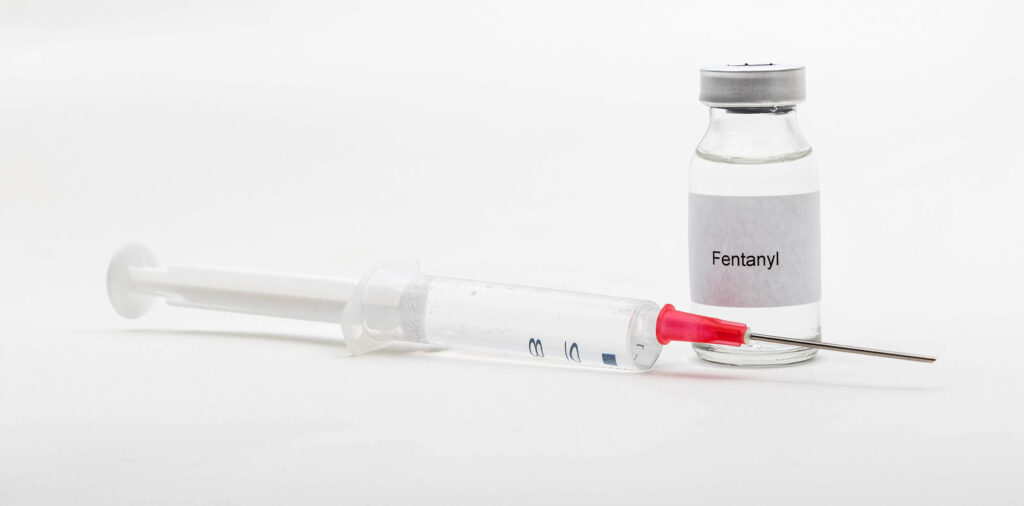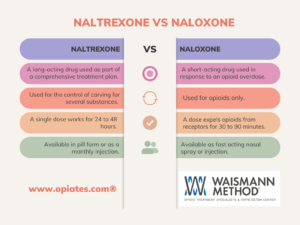
Safe Usage of OTC Drugs: Essential Tips and Guidelines
Welcome to your comprehensive guide on safely navigating the world of OTC (over-the-counter) drugs. In this essential read, we dive into critical tips and strategies

Fentanyl is a powerful generic synthetic opioid that physicians initially prescribe to treat severe chronic pain. It is also a narcotic with a high potential for tolerance, dependence, and, eventually, addiction. Physicians prescribe fentanyl to patients already tolerant of other opiate drugs. Pharmaceutical companies also market this controlled substance under the names Duragesic, Fentora, Sublimaze, and Actiq. All forms of fentanyl are extraordinarily potent and possibly fatal. In fact, this drug is 50 to 100 times more potent than morphine.
Speak Confidentially
with an opiate detox treatment expert.
A side effect is secondary to the main effect of a drug or therapy and can be undesirable. Not every person experiences side effects in the same way. If you take fentanyl or any other opioid pain reliever with other substances, including alcohol, medications, and herbal supplements, please let your prescribing physician know because the interaction can lead to dangerous side effects. Furthermore, patients who take fentanyl in conjunction with sedatives, tranquilizers, and muscle relaxers experience harmful sedative effects, including passing out and slow breathing. Factors that could influence how and when a person experiences side effects of certain drugs also include mental health and how he or she metabolizes the drug.
Although fentanyl can cause similar side effects to those of other opioids. It is essential to remember that its powerful potency can make the side effects to set in faster, be more intense, and last longer than other drugs in its class.
So many people pick up their prescriptions and begin taking them without familiarizing themselves with side effects, warnings, and interactions. It’s important to know what symptoms to look for because some can be quite serious. Less severe but commonly reported side effects associated with fentanyl can include:
Medical professionals urge patients to seek emergency medical treatment immediately if they experience signs of an allergic reaction to fentanyl which can include:
It is essential to know that dependence and addiction are also harmful side effects of fentanyl and other opiate painkillers. Addiction to this drug has become a plague in our society. Fentanyl overdose continues to reach unseen levels every day. The results of such crisis are tragic and are affecting every city in this nation.
Since opioid abuse impairs the thought process, many users disregard the significant risk, fentanyl addiction poses. The drug’s potency creates a much higher likelihood of accidental overdose. In fact, fentanyl-related overdoses continue to skyrocket throughout the country. Overall across the U.S., these overdose deaths increased more than 14% from 2017 to 2018.
The Diagnostic and Statistical Manual of Mental Disorders, 5th edition (DSM-%) recognizes Opioid Use Disorder as a condition. The DSM also provides 11 symptoms associated with this disorder.
In the case of fentanyl abuse, some symptoms include when the person is:
** 2 to 3 of the above symptoms represent mild Opioid Use Disorder, 4 to 5 represents moderate, and six or more shows the presence of a severe case.
When the body receives a certain drug continuously, it naturally adjusts. One of these adjustments is tolerance, and the other is physical dependence. The moment someone reduces or stops using fentanyl, withdrawal symptoms emerge. The following withdrawal symptoms are the most common:
Attempting to detox from fentanyl without medical guidance is not usually advisable. Fentanyl detox can be particularly uncomfortable and, in some cases, dangerous.
Misusing fentanyl in any way can be dangerous to your health. Moreover, taking it in higher doses or more frequently than recommended can lead to serious side effects, addiction, overdose, even death. Receiving a full health evaluation and supervision through an inpatient medical detox is often the best approach to safely and effectively start treatment for someone suffering from fentanyl addiction.
Speak With an Addiction Specialist
Exceptional Care & Better Outcome. Get In Touch With Us Today!
Clearly, medical doctors are the most knowledgeable and equipped health care professionals to deal with physiological distress and health events related to fentanyl detox. There are a number of medical detox programs available; for this reason, it is crucial to understand the benefits and drawbacks of each treatment program clearly.
Waismann Treatment™ has been providing one of the most successful opioid detoxification for nearly two decades. Although most people recognize us as the premier rapid detox center in the world, we provide much more. We clearly understand that patients are different and have unique needs; therefore, a single modality would not successfully meet the needs of every individual. That is why we offer a multitude of medically assisted fentanyl detox methods, with and without anesthesia. Only this way, can we successfully meet the specific needs of each client.
In addition to our medical detox, we provide patients with recovery care at our private drug treatment and post-detox facility, Domus Retreat. Domus is an integral part of this successful treatment. It is made available, so patients recover in a tranquil, private, and safe setting.
At Domus, people can work on their physical, emotional, and spiritual needs without having to share their most intimate thoughts or feelings with other patients. Domus guests stay in their own, individual suites, to ensure their space is as private, sanitary, and as comfortable as possible. Various recovery services are also available to assist guests in making their recovery smoother – a staff of healthcare professionals, therapists, and addiction specialists.

What's New at Waismann Method®

Welcome to your comprehensive guide on safely navigating the world of OTC (over-the-counter) drugs. In this essential read, we dive into critical tips and strategies

Substance use disorders (SUDs) and mental health issues share a complex relationship, often intertwining and amplifying each other’s effects. In this blog, we delve into

In the realm of opioid addiction treatment and emergency overdose reversal, Naltrexone and Naloxone stand out as critical medications. Although both belong to the opioid



Get Newsletter Updates from Waismann Method®
"*" indicates required fields
We are available 7 days a week
DISCLAIMER: The text presented on this page is not a substitute for professional medical advice. It is for your information only and may not represent your true individual medical situation. Do not hesitate to consult your healthcare provider if you have any questions or concerns. Do not use this information to diagnose or treat a health problem or disease without consulting a qualified healthcare professional. Be advised that Opiates.com articles are derived from various sources and may not reflect your own country’s regulations.